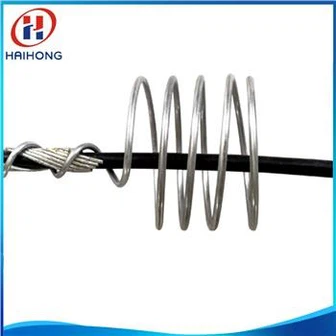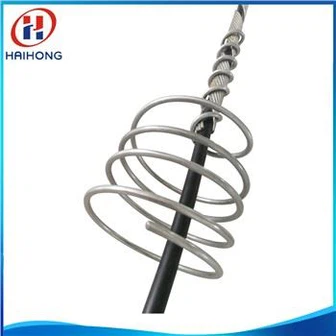Is The Cable Shockproof Hammer Facing Out Or in
The deployment of optical fiber cables has become more common with the rise of emerging technologies like the internet of things, cloud computing, and 5G. To ensure that these cables are protected against any damage caused by seismic activity, engineers have designed shock absorbers that are meant to be installed on the cables. However, there has been a long-standing debate on which way the shock absorbers should face - towards the interior or exterior of the cable.
Some industry experts have argued that the shock absorbers should be installed with their openings facing outward, while others believe that they should be placed inside the cable, facing inwards. Both schools of thought have valid reasons for their positions.
Those in the former camp argue that having the shock absorber face outward helps to reduce friction. During an earthquake, cables tend to move with the earth's shifting tectonic plates, which can cause them to rub against each other. This friction can cause the cables to snap or
break, but having the shock absorber facing outward can reduce the force of the friction, making the cables less susceptible to damage.
On the other hand, proponents of the latter approach argue that having the shock absorber facing inside provides better protection against external factors. When the shock absorber is inside the cable, it is less likely to be damaged by environmental factors, such as corrosion and weathering. This can prolong the lifespan of the cable, reducing the need for costly repairs and replacements.
However, regardless of the direction of the shock absorber installation, it is crucial to ensure that the cables are properly secured during installation to minimize any risks of damage. Additionally, it is important to note that the decision on whether to install the shock absorber facing inside or outside is not an either/or proposition. Instead, it should be determined on a case-by-case basis depending on the specific seismic and environmental conditions of the location.
In conclusion, the direction of installation of shock absorbers in optical fiber cables should be determined by weighing up the advantages and disadvantages of each approach, depending on the location and environmental factors. It is also essential for teams responsible for installation to ensure that all cables are properly secured to minimize the risks of damage. With proper care and maintenance, optical fiber cables and their shock absorbers can be reliable means of communication and secure data transmission for years to come.







